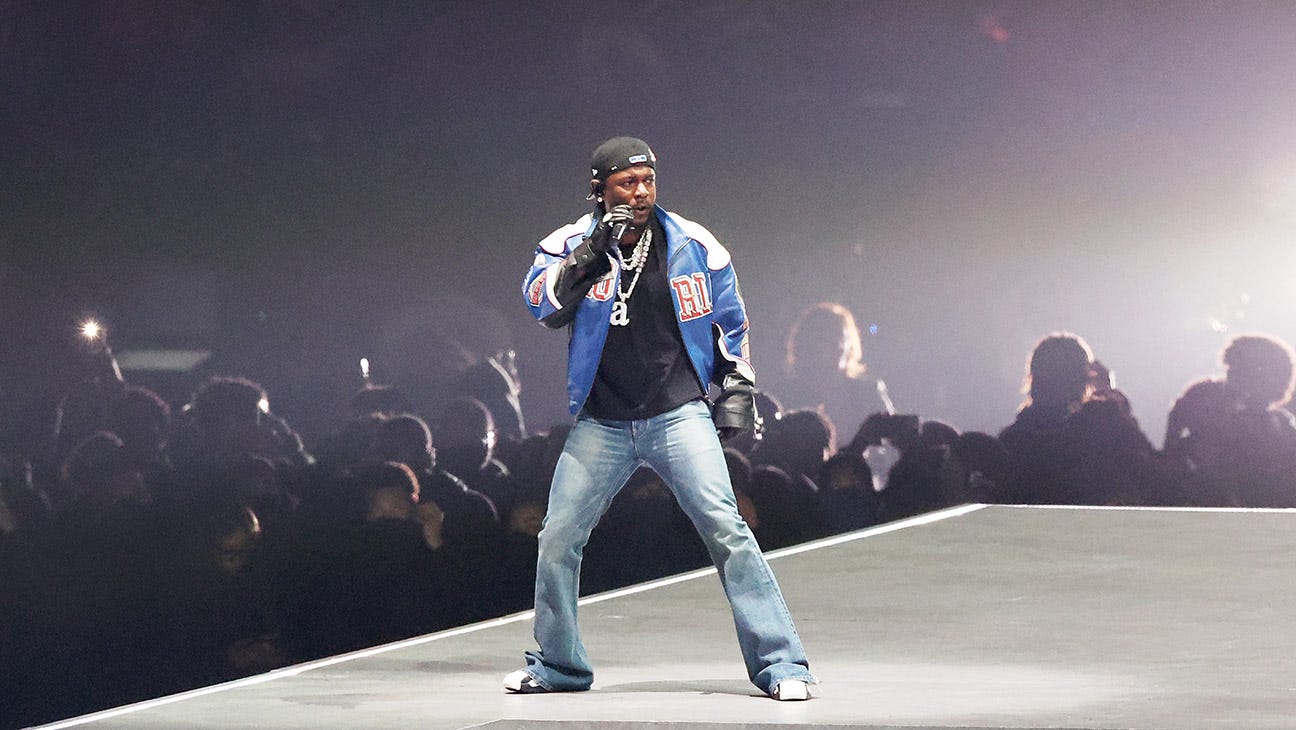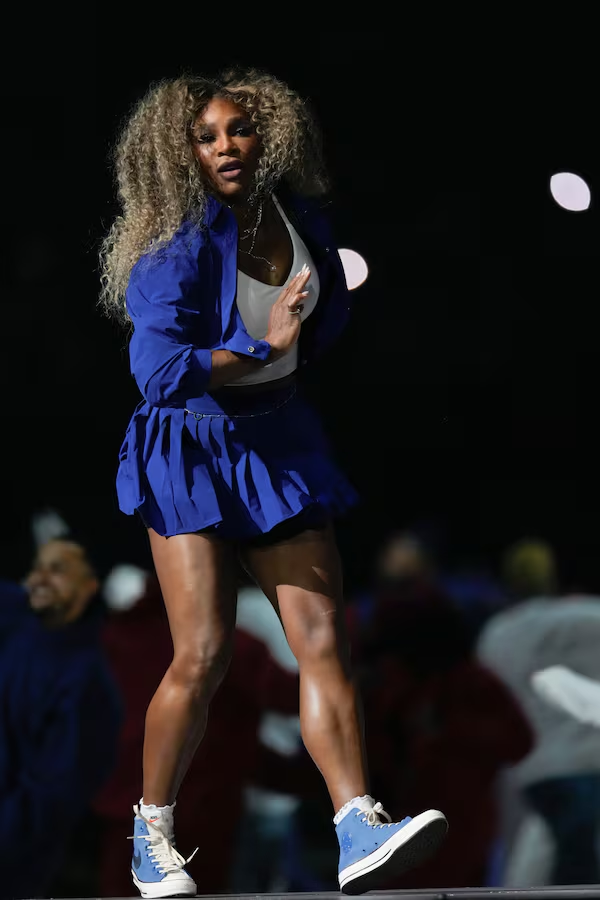Your cart is currently empty!

Kendrick Lamar’s Super Bowl 59 Performance: Hidden Meanings, Messages of Unity, and the Significance of Black History Month
Few halftime shows in recent NFL history have sparked as much conversation as Kendrick Lamar’s electrifying performance at Super Bowl 59. The hip-hop luminary took center stage in front of millions of viewers, delivering a spectacle of compelling visuals, sharp lyricism, and powerful symbolism. This performance was not just about entertainment—it was an artistic statement steeped in the spirit of Black History Month, unity, and societal change.
In this in-depth article, we will explore the hidden meanings and messages behind Kendrick Lamar’s setlist, how the show honored the significance of Black History Month, and why it resonated with fans who seek unity in the face of today’s seemingly oppressive leadership. Join us in the comment section at the end to continue the dialogue and share your own interpretations.

1. The Build-Up to Super Bowl 59
The anticipation for Super Bowl 59 reached fever pitch when the NFL announced Kendrick Lamar as the headliner for the halftime show. Known for his innovative performances and provocative themes, Lamar came into the spotlight carrying the weight of his past achievements, including multiple Grammy Awards and a Pulitzer Prize.
With the Super Bowl often falling near—or during—Black History Month, many fans and critics speculated whether Lamar would use the platform to pay homage to African American history and the ongoing fight for social justice. As it turned out, Lamar exceeded expectations with an intricate tapestry of music, visuals, and dance routines, each one layered with deeper meaning.
2. The Setlist: A Deep Dive into Each Track
Kendrick Lamar’s performance featured a mix of classic hits and newer, unreleased material. Here’s a breakdown of each track and its potential hidden message:
- “GNX” Teaser (Snippet)
- Opening the show with a snippet of an upcoming project, tentatively titled “GNX,” instantly garnered attention. The haunting intro set the tone for a performance that would challenge viewers to look beneath the surface. While details about “GNX” remain scarce, fans speculate it delves into themes of generational trauma and personal growth—elements often central to Lamar’s artistry.
- “Squabble Up”
- Symbolically performed against a backdrop of protest imagery, “Squabble Up” emphasized standing firm in the face of conflict. The stage design featured large-scale visuals of fists raised in solidarity. It was a clear nod to community cohesion and grassroots movements—particularly relevant during Black History Month, when the contributions of activists are commemorated.
- “HUMBLE.”
- One of Lamar’s most recognizable tracks, “HUMBLE.” underscored the importance of self-awareness. The performance was stripped-down compared to the rest of the set, with Lamar taking center stage under a single spotlight. This choice highlighted introspection and self-reflection, urging us to remain humble in our pursuits despite external pressures.
- “DNA.”
- This pulsating track tackled identity and heritage. Lamar’s backup dancers wore attire emblazoned with historical images of civil rights leaders, referencing the lineage of resistance that shapes the Black experience in America. During Black History Month, “DNA.” served as a profound reminder of how personal and collective histories inform our present-day realities.
- “Euphoria”
- A melodic interlude that slowed the tempo, “Euphoria” demonstrated Lamar’s emotional range. Although new to many viewers, the song’s lyrics hinted at moments of peace and clarity amid chaos. The stage visuals showcased a sunrise motif—a metaphor for renewal and hope, aligning with themes of liberation and spiritual awakening.
- “Man at the Garden”
- Shrouded in cryptic imagery, “Man at the Garden” left fans buzzing about its biblical references and the notion of redemption. The garden might symbolize temptation, sacrifice, or rebirth—themes consistently explored in Lamar’s discography. It’s also possible that it served as a metaphorical representation of community spaces where growth, tension, and conflict all converge.
- “Peekaboo”
- Lightening the mood momentarily, “Peekaboo” featured playful choreography and kid-like imagery. Yet, beneath the surface, the lyrics alluded to the unpredictability of the current social climate. The message? Tread carefully, as nothing and no one is ever exactly as it seems.
- “Luther” feat. SZA
- A heartfelt tribute featuring SZA’s soulful voice, “Luther” is widely rumored to be a reference to both Luther Vandross’s musical influence and Dr. Martin Luther King Jr.’s legacy. During Black History Month, this collaboration underscored the significance of unity, love, and peaceful resistance. According to an interview snippet from SZA in Rolling Stone (2023), the track was written to “uplift communities” by merging the power of gospel with modern R&B stylings.
- “All the Stars” feat. SZA
- Originally featured on the Black Panther soundtrack, “All the Stars” is an anthem of pride, unity, and forward-looking optimism. Having both Kendrick Lamar and SZA together reminded viewers of the triumphs and tribulations endured by Black artists throughout American history. With powerful constellations projected overhead, the performance visually referenced African cosmology and the theme of interconnectedness.
- “Not Like Us”
- This hard-hitting track tackled social division and the current political climate. It carried an undertone of rebellion, calling out systemic oppression while celebrating the resilience of marginalized communities. The intense choreography and minimal lighting evoked a sense of urgency, pushing viewers to confront uncomfortable truths.
- “TV Off”
- Closing the set with “TV Off,” Lamar pressed audiences to disengage from media narratives that can perpetuate fear or division. The stage visuals displayed television screens turning off in unison, symbolizing collective awakening. As the music faded, the stadium plunged into darkness, sending a powerful message about the necessity of turning away from distractions to address real issues.
3. The Absence of “Alright”
Interestingly, Lamar chose not to perform “Alright,” a track closely associated with the Black Lives Matter movement and social justice. This omission sparked debates on social media. Some fans argued that “Alright” is already an anthem recognized worldwide, and Lamar aimed to introduce new narratives. Others noted that its absence allowed fresh material like “Luther” and “Man at the Garden” to shine. Regardless of the motive, “Alright” still lingered in the background as part of Lamar’s cultural legacy.

4. Significance of Black History Month
The timing of Super Bowl 59, landing squarely in Black History Month, amplified the importance of Lamar’s performance. By weaving in references to African American heroes, struggles, and cultural achievements, Lamar effectively used one of the largest media platforms to highlight the ongoing journey toward equality and justice. His set, brimming with evocative imagery, was a testament to the resilience of the Black community—reminding viewers that while progress has been made, the work is far from over.

Reference Note: For those interested in understanding the depth of these artistic choices, consider exploring the writings of prominent African American historians such as Henry Louis Gates Jr. and Ibram X. Kendi, whose works document how cultural expressions are deeply intertwined with Black political and social history.
5. A Message of Unity in Challenging Times
Throughout the performance, Lamar’s overarching message centered on unity—a concept that resonates deeply amidst a backdrop of social and political tensions. The blend of old-school protest imagery, biblical symbolism, and futuristic visuals underscored the need for communal harmony. As many on social media noted, Lamar’s call for togetherness felt like a direct response to perceived oppressive leadership in today’s political arena. The performance highlighted a universal longing: the desire to come together, foster understanding, and create a better world for all.
By focusing on messages of personal responsibility, cultural pride, and collective empowerment, Lamar illustrated how music can serve as a vehicle for hope. Each track contributed a piece of the narrative, painting a picture of unity that stands strong in the face of division.
6. Join the Conversation
Kendrick Lamar’s Super Bowl 59 halftime show was more than a musical performance; it was an immersive experience rife with meaning. From the teaser of “GNX” to the rousing finale of “TV Off,” Lamar took millions of viewers on a journey—a journey shaped by the realities of Black History Month, the complexities of social injustice, and the unyielding pursuit of unity.
Now, we want to hear from you. What were your favorite moments from Kendrick’s performance? What hidden messages did you catch, and how do you think his show ties into the broader narrative of Black History Month? Do you agree that Lamar’s message speaks to the need for unity in the face of today’s challenges? Share your thoughts, theories, and insights in the comment section below, and let’s continue this essential conversation.
References
- Rolling Stone (2023) – SZA Interview Snippet (cited for “Luther” inspiration)
- Henry Louis Gates Jr. – Stony the Road: Reconstruction, White Supremacy, and the Rise of Jim Crow
- Ibram X. Kendi – How to Be an Antiracist
- Images
(Note: This article is written for informational and discussion purposes, blending factual reporting on Kendrick Lamar’s artistry with interpretive analysis of his Super Bowl 59 performance.)
Discover more from NO OFFENSE LLC
Subscribe to get the latest posts sent to your email.
Comments
2 responses to “Kendrick Lamar’s Super Bowl 59 Performance: Hidden Meanings, Messages of Unity, and the Significance of Black History Month”
-
Great read!!
-
Thank you for your feedback!
-


Leave a Reply